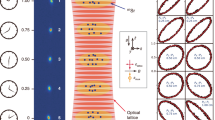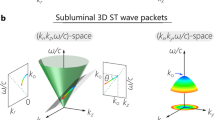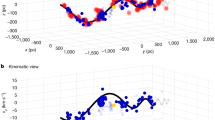Abstract
IMPROVEMENTS in the precision and stability of caesium beam clocks have enabled searches to be made for very small changes in the rate of a clock under the influence of various physical phenomena. Three known effects can change the frequency of a wave: the Doppler effect (radial and transverse), the gravitational redshift and a change of the optical path with time1. If any other effects exist, their discovery would be of great importance to astrophysics, for so much significance attaches to the interpretation of redshifts of lines from distant galaxies.
This is a preview of subscription content, access via your institution
Access options
Subscribe to this journal
Receive 51 print issues and online access
$199.00 per year
only $3.90 per issue
Buy this article
- Purchase on SpringerLink
- Instant access to full article PDF
Prices may be subject to local taxes which are calculated during checkout
Similar content being viewed by others
References
Sadeh, D., Knowles, S. H., and Yaplee, B. S., Science, 159, 307 (1968).
Sadeh, D., Knowles, S. H., and Au, B., Science, 161, 567 (1968).
Sadeh, D., Hollinger, J. P., Knowles, S. H., and Youmans, A. B., Science 162, 897 (1968).
Markowitz, W., Science, 162, 1387 (1968).
Author information
Authors and Affiliations
Rights and permissions
About this article
Cite this article
SADEH, D., AU, B. Daily Variations of the Frequency of a Very Accurate Radio Frequency. Nature 224, 1291–1293 (1969). https://doi.org/10.1038/2241291a0
Received:
Issue date:
DOI: https://doi.org/10.1038/2241291a0
This article is cited by
-
Diurnal Frequency Variation and Refraction Index
Nature Physical Science (1971)
-
Explanation of Apparent Diurnal Variation in Caesium Clock Rates
Nature (1970)
-
Comments on « a new experimental test of special relativity »
Lettere al Nuovo Cimento (1970)



